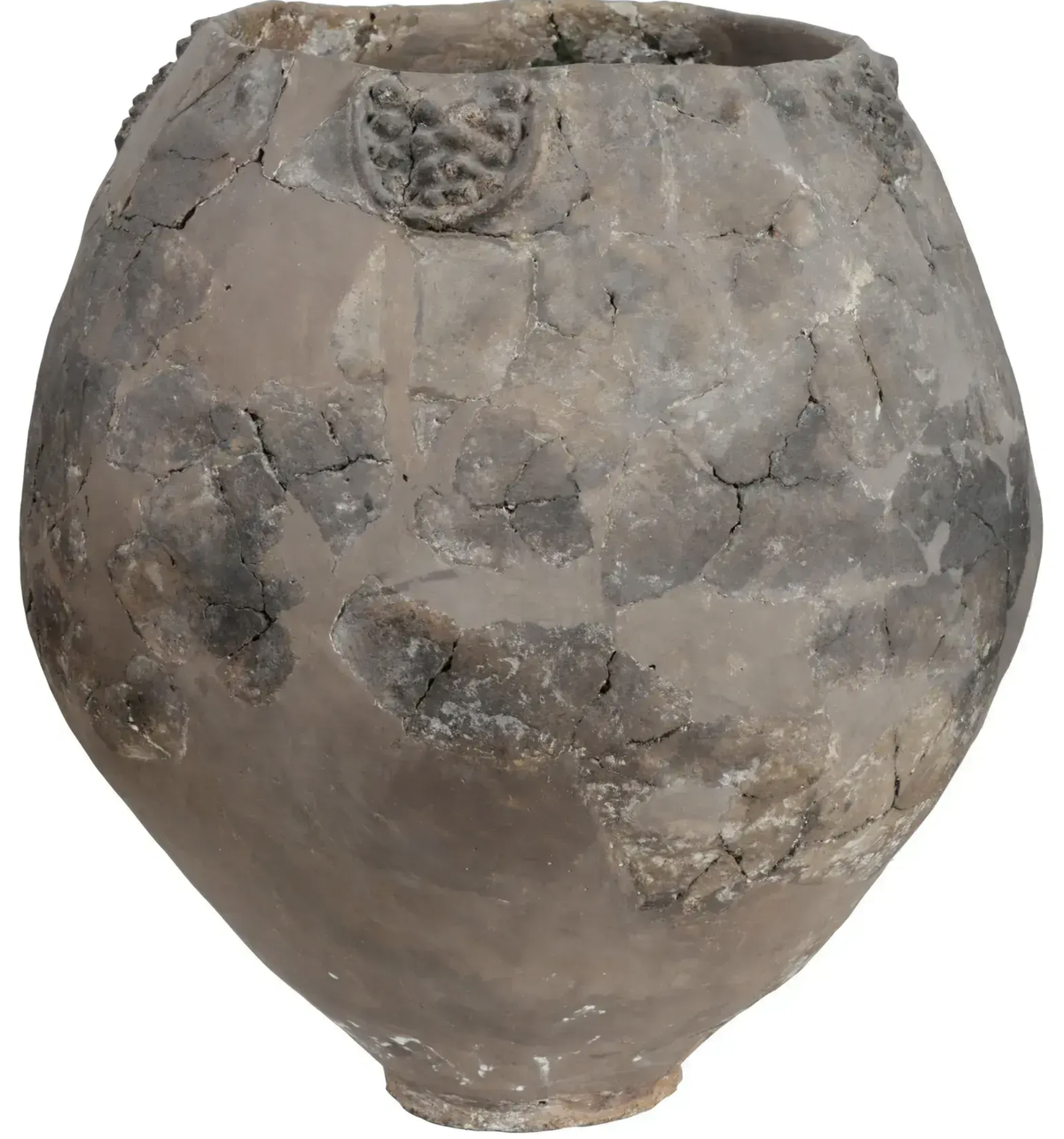Der Wein und der Mensch teilen eine lange gemeinsame Geschichte. Wir haben einige Fakten zur Weinkultur und Herstellung zusammengetragen. Wo die Wiege des Weins liegt und warum der «gespritzte Weisse» keine moderne Erfindung ist, erfährst du hier.

Wiege des Weins
Funde zeigen, dass Menschen in Georgien bereits vor etwa 8000 Jahren Wein herstellten. Der gewonnene Traubensaft wurde zusammen mit den Traubenschalen, -kernen und -stielen in grosse Tongefässe gegeben – also Orangewein, sofern weisse Trauben verwendet wurden. Noch heute gibt es in Georgien eine Vielzahl an Orangenweinen. Diese Gefässe, die heute als Qvevris bekannt sind, wurden tief in den Boden eingegraben, um die Temperatur während der Fermentation konstant zu halten.
Bier für den Pöbel in Mesopotamien
In Mesopotamien, im heutigen Irak und Iran, war Wein ein wertvolles Handelsprodukt und wurde in religiösen Praktiken verwendet. Wein war ein Luxusprodukt, das nur die Elite trank, während Bier dem Pöbel vorbehalten war. Eine Besonderheit der mesopotamischen Weinherstellung war die Zugabe von Dattelsirup, um den Wein zu süssen. Dieser Sirup wurde oft während der Gärung hinzugefügt, um den Geschmack des Weins zu verbessern.
Kein Wein für die Frauen
Nicht nur Bürger und Legionäre tranken im römischen Reich Wein, auch Sklaven durften Wein konsumieren. Lediglich für Frauen galt ursprünglich ein kurzzeitiges Weinverbot, um der Zügellosigkeit vorzubeugen. Dieses Verbot wurde jedoch zum Glück wieder aufgehoben.
Der Spritzer, keine neue Erfindung!
Wein und Wasser waren lange Zeit unzertrennlich. Wer Wein in der Antike pur trank, galt als Säufer. Bei den Griechen war es üblich, den Wein gemischt mit Wasser zu servieren, während die Römer das Mischverhältnis selbst bestimmten, indem sie sowohl einen Wasserkrug als auch einen Weinkrug servierten. In der Antike war Wein ein Grundnahrungsmittel, und Historiker nehmen an, dass pro Tag und Person 1-2 Liter getrunken wurden. Im Mittelalter wurde wegen der schlechten Wasserqualität oft nur Wein oder Bier mit oder ohne Wasser getrunken; auf pures Wasser wurde verzichtet.
Bunte Weine und das erste Holzfass
Der Wein bei den Römern war vermutlich schon einigermassen trinkbar und ziemlich bunt. Es gab vinum album (weiss), vinum fluvum (gelb), vinum sanguineum (blutrot) und vinum nigrum (schwarz). Um den Wein zu transportieren, verwendeten die Römer Holzfässer aus dem Nordwesten des Reichs, da sie viel leichter als Amphoren waren. So wurde im heutigen England bereits Wein aus Holzfässern getrunken. Die Römer verbreiteten den Weinbau in ganz Europa, einschliesslich Frankreich, Spanien und Deutschland. An heissen Tagen tranken die Römer ihren Wein übrigens gerne eisgekühlt und wärmten sich in kalten Nächten mit Glühwein. Sogar das Räuchern von Wein, um ihm mehr Schwere zu verleihen, war bei den Römern üblich. Auch Dessert- und Gewürzweine stellten die Römer nach eigenen Rezepten her. Es lassen sich etwa 50 Rezepturen nachvollziehen: Mit Wermut versetzter Wein hiess absinthum, mit Rosenblättern rosatum, mit Veilchenblättern violatum und mit Pfeffer conditum oder piperatum. Auch Anis, Dille, Fenchel, Lorbeer, Minze, Pistazien und Wacholder fanden ihren Weg in die Weine der Antike.
Kleine Reblaus, grosse Katastrophe
Der kleine Übeltäter ist nur eineinhalb Millimeter gross und doch zerstörte die Reblaus (Phylloxera) in den 1860er Jahren einen Grossteil der Weinberge in Europa. Es wird angenommen, dass die Reblaus aus Nordamerika über Kleidung eingeschleppt wurde. Mehr als 70% der gesamten europäischen Anbaufläche war befallen. Es dauerte drei Jahrzehnte bis zur Einführung amerikanischer Reben als resistente Unterlagen. Die europäischen Reben wurden auf die amerikanischen gepfropft, um die Weinproduktion zu retten. Es gibt wurzelechte 200 Jahre alte Reben, die in sandigen Böden wuchsen und nicht befallen wurden, da die Reblaus keine sandigen Böden mag.
Heute Standard, aber so gut wie neu
Mit der Mechanisierung der Landwirtschaft und der Einführung von Edelstahlbehältern in den 1960er Jahren wurde die Weinproduktion effizienter und hygienischer. Temperaturkontrolle während der Gärung, moderne Filtrationsmethoden, Methoden zur Schönung und die gezielte Verwendung von Reinzuchthefen (Hefestämme, die in Laboren kultiviert wurden) wurden in der Weinherstellung immer häufiger und sind heute Standard. Diese Hefen wurden speziell für ihre Eigenschaften ausgewählt, um die Gärung zuverlässig und konsistent zu steuern und bestimmte Aromen im Wein zu fördern. Die Rückkehr zu traditionellen Anbaumethoden, wie die Verwendung von Amphoren, wilden Hefen oder der biologische oder biodynamische Weinbau, wird wieder populärer.



